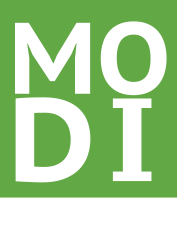Building a website from scratch? Revamping an existing one? Either way, there are plenty of considerations you’ll need to make before getting started. Whether your budget is big or bootstrapped, here are 5 tips for hiring a really great web designer.
1. Own, not rent, your website
Before beginning your website project, get clear on the difference between renting and owning your website. Customized themes from SquareSpace and ElegantThemes are certainly beautiful, but require you to pay monthly or annual fees to continue using them. For custom-designed websites, you should have full rights once your project is completed and paid for.
When reviewing developer proposals, carefully read the fine print. Will ownership of the domain name, hosting environment, and source code be transferred from the web designer to you? What about the copyright for images, graphic designs and content? Without these guarantees, you won’t be able to keep your website should you decide to change developers in the future, and you’ll have to rebuild from scratch.
2. Check out their portfolio
Choose a few of the web designer’s samples and visit these websites. Do you like what you see? Don’t just ooh and ahh over pretty designs – go beyond the home page and click through several pages to check their functionality, site architecture, and user experience. Look for clean designs and intuitive navigations. The quality of work they put into their past projects will likely reflect the outcome of your website project.
3. Inquire about SEO
A properly optimized website will keep Google’s penguins, pandas, and hummingbirds at bay. Talk to your web design candidates about their SEO knowledge. If they make pie in the sky promises about first page ranking, that’s a huge red flag and you should walk away. If they talk about how proper indexing, coding, and other site-wide techniques can improve search bot accessibility and page speed, you’re good to go.
4. Make sure you mesh well
When vetting web designers, schedule at least one in-person or virtual meeting with each candidate and interview them face to face. How they respond to your questions now will speak volumes about how they’ll be to work with when the project is in full swing. Do they ask a lot of questions and seem genuinely interested in your project? Do they seem nonchalant and brush off every concern you have an easy fix? Do they overpromise on what they can deliver like a sleazy salesman? Gauge their reactions to your interview questions to determine if they’re a good fit.
5. Think about the long term
Once development is completed, websites require routine maintenance work on the back end to continue running optimally. Performing upgrades, safely backing up files, cleaning cache, deleting old plugins…the list goes on. Who will handle these technical tasks?
If you want to manage these tasks on your end, make sure your website is created in a user-friendly CMS like WordPress or Drupal. Plus, these environments will make editing, adding and deleting content a snap. However, if you’d prefer to hand responsibility for these tasks over to a professional, ask your candidates whether they offer maintenance programs and at what the costs will be.
What do you look for when vetting web designers? Share your expert tips in the comments below.






